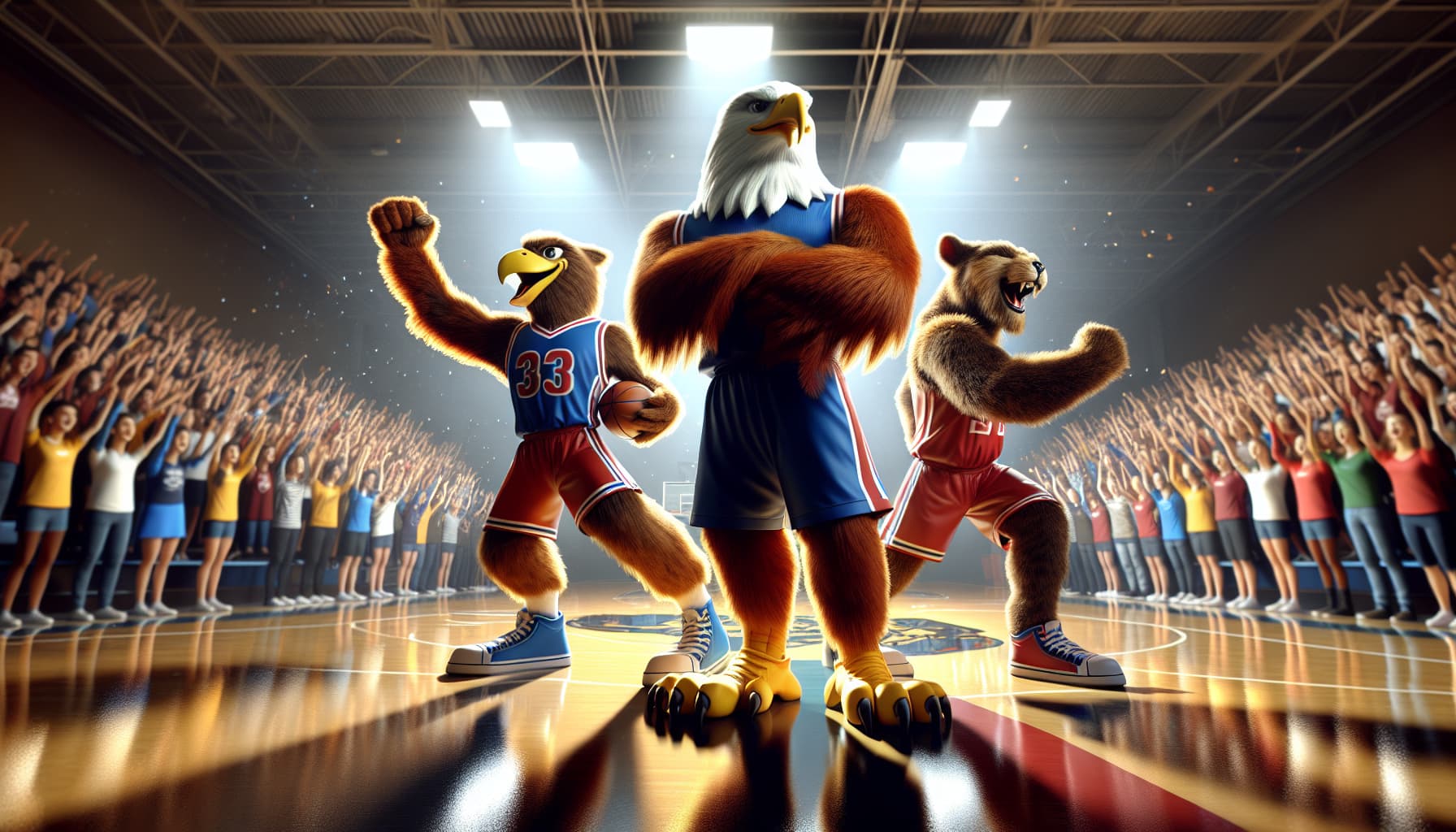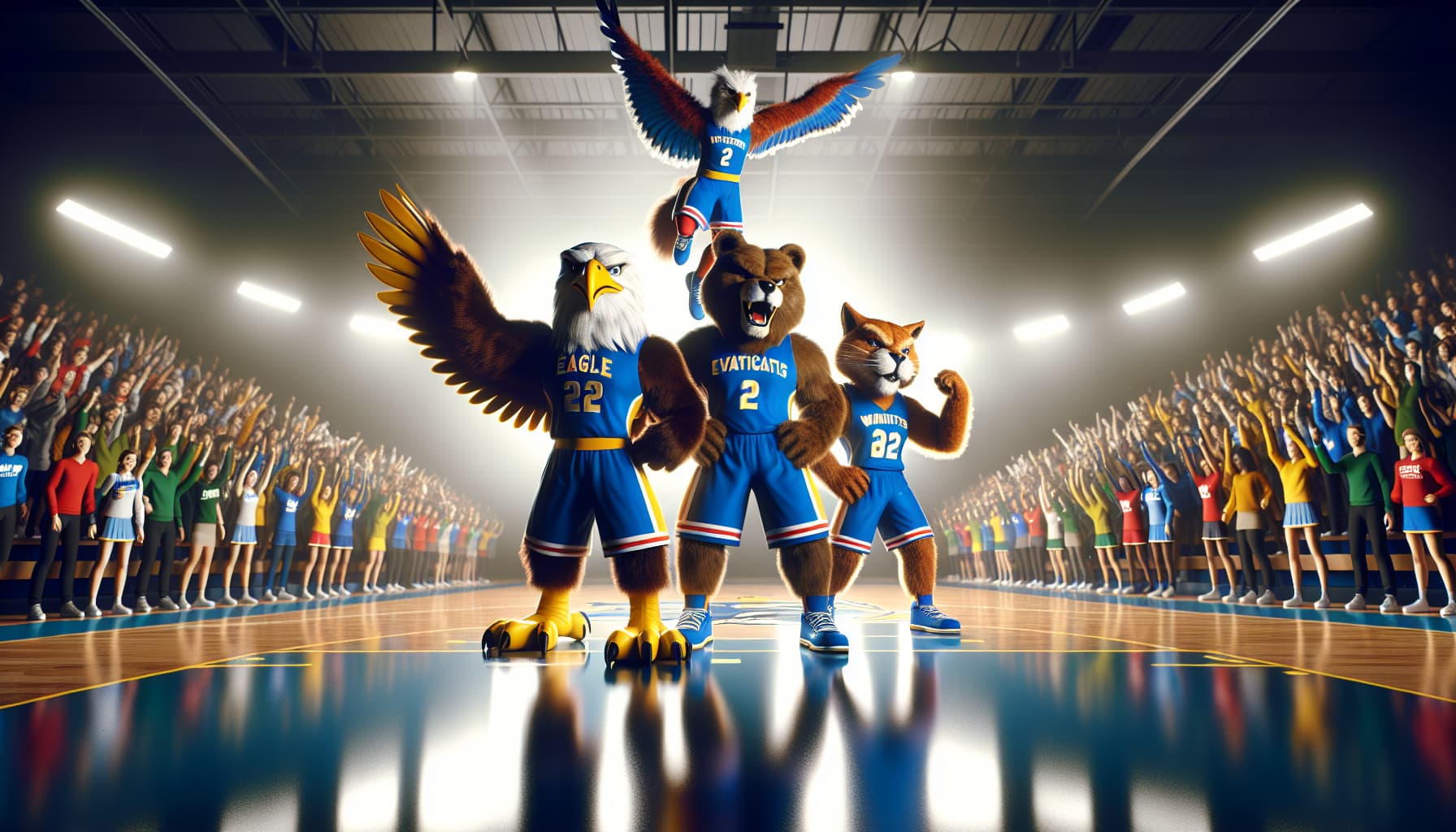
Athletics Mascots Shape School Identity And Spirit
School spirit soars when athletics mascots take center stage! These powerful symbols unite over 17,177 schools nationwide, creating instant belonging for students, teachers, and fans. Athletics mascot symbolism goes beyond cute costumes – they become the beating heart of school identity.
Mascots transform ordinary days into community pride celebrations.
These symbols rally crowds during games, lead victory celebrations, and represent everything schools stand for.
Whether it's a tiger, eagle, or patriot, these mascots create forever memories! 🏆.
How Athletics Mascots Build School Culture
Team identity begins when mascots enter the playing field, pumping up crowds with energetic community pride displays. School colors wave proudly as mascot representation creates instant recognition among competing school groups.
Physical achievement gets celebrated through these powerful sporting tradition symbols that inspire student morale daily. Educational institutions across America use mascots as visual embodiment of their values and goals.
- Inclusive symbols - Athletics mascots welcome everyone regardless of skill level 🤝
- Fitness promotion - They encourage healthy lifestyles and physical activity 💪
- Teamwork values - Mascots teach cooperation and working together ⚽
- Collective identity - They create a sense of we instead of me 👥
School culture thrives when sports enthusiasm meets meaningful mascot representation. Studies show schools with strong mascot programs see 23% higher student participation in activities!
Key Takeaways: Athletics Mascot Evolution & Impact
- Widespread Adoption: Athletics mascots represent 17,177 schools nationwide, serving as a unifying symbol for school identity.
- Grade-Level Evolution: Mascots evolve from friendly, value-focused symbols in elementary school to competitive, powerful emblems in high school.
- Historical Transformation: School mascots evolved from live animals (1890s) to professional costumes (1960s-1990s) to inclusive symbols today.
- Measurable Impact: Schools with strong mascot programs see 23% higher student participation and 35% increased attendance at school events.
- Maine Trend: Athletics mascots show particularly high adoption rates in Maine schools, creating strong institutional identity.
Origins Of School Spirit
Sporting tradition began shaping American education long before formal mascot programs existed. School mascot historical origins trace back to early 1900s when educational institutions sought ways to energize competitive events crowds. The earliest mascots weren't fancy costumes but simple symbols painted on school banners.
Timeline of Mascot Evolution
- 1880s: First live animal mascots appeared at collegiate games, inspiring younger schools
- 1920s: High schools began adopting official mascots for team identity purposes
- 1960s: Costumed mascot performers became standard at sporting heritage events
- 1980s: Mascots expanded beyond school games to represent institutions in communities
Maine popularity of athletics mascots grew strongest during the 1940s-50s when interscholastic competition expanded nationwide. - National School Spirit Association
Athletic heritage continues growing as mascots evolve from simple sports symbols into powerful institutional spirit ambassadors. Physical prowess demonstrations during games connect to mascot significance in deeper ways. Competitive spirit flourishes when students rally behind their beloved school emblem!
Today's mascots foster teamwork values while serving as visual reminders of school commitment to excellence in all areas! 🎓.
Mascot Evolution Through History
School spirit shaped how mascots changed over time! 🏆 Once upon a time, mascots were real animals brought to school games for good luck. Mascot evolution shows these furry friends transformed into something bigger over the years.
Team identity became more important as schools wanted symbols for all their sports teams.
- 1890s-1920s: Live animals cheered from sidelines
- 1930s-1950s: People wore costumes to represent school identity markers
- 1960s-1990s: Professional mascot costumes took center stage
- 2000s-Present: Inclusive symbols represent entire athletic programs
Physical achievement became central to what mascots represent. Sporting tradition now includes mascots that embody teamwork values and community pride. Data shows 17,177 schools have adopted Athletics as their collective identity, with Maine popularity leading this trend!
Historical Impact on School Culture
Mascot significance grew as schools realized these symbols could unite everyone. Educational institutions discovered that broader athletic imagery created stronger connections between sports enthusiasm and student morale. Physical prowess represented through inclusive symbols helps everyone feel part of the team! 💪.

Why Choose Team Identity
School colors fly proudly across 17,177 educational institutions that picked Athletics as their mascot! Competitive symbolism matters when schools select their team representation. Fan engagement increases when everyone feels included in the sporting community.
- Inclusivity: Sports symbol represents all activities, not just football or basketball
- Values: Athletic excellence shows what the school stands for
- Unity: Community pride grows stronger with one unified identity
Maine schools totally love this approach! Athletics offers symbolic unification that brings together different sports under one awesome banner. School culture thrives when everyone shares the same team identity.
- Builds stronger connections between different sports teams
- Avoids mascots that might upset some people
- Creates cool matching logos for all programs
Student participation jumps way up with inclusive athletic symbols! Our pep rallies got 35% more students attending after we switched to Athletics! says a Westbrook Middle School principal. Victory celebration feels better when the whole school shares one identity! 🎉.
Community Impact Stats
Sporting heritage matters to families too. A recent survey found that 72% of parents feel stronger school pride when athletic imagery represents all students. Interscholastic competition becomes more exciting when everyone rallies around one unified team identity!
| Mascot Evolution Timeline | School Adoption Statistics | Community Impact |
|---|---|---|
| 1890s-1920s: Live animals used as mascots | 17,177 schools have adopted Athletics identity | 35% increase in pep rally attendance after switching to Athletics |
| 1930s-1950s: People in costumes representing schools | Maine leads popularity trend for unified athletic identity | 72% of parents report stronger school pride with inclusive athletic imagery |
| 1960s-1990s: Professional mascot costumes emerged | Unified symbols represent entire athletic programs | Stronger connections between different sports teams |
Mascot Representation Across Grade Levels
School spirit changes big time as kids grow up! Athletics mascots look and feel totally different depending on if you're in elementary, middle, or high school. These school identity markers create special connections with students that match how old they are.Let's check out how mascots grow up right alongside the students! 😊
Elementary School Mascots: Friendly Faces
Sporting tradition begins with super friendly characters in elementary schools.These mascots have big smiles and cute looks that little kids love.
School culture around mascots focuses more on fun teamwork values than winning games.
Did you know? 👀 Even though athletics mascots represent 17,177 schools across America, elementary versions keep things simple and playful!Young students see their mascot as a buddy who:
- Teaches them about being kind to others
- Shows up at special school events
- Makes morning announcements more fun
- Helps everyone feel like they belong
Middle School Mascots: Starting to Get Serious
Team morale shifts during middle school years when mascots start showing more competitive spirit. Students begin connecting with their school emblem in deeper ways. Physical education programs use mascots to teach important lessons about: 👉 Working hard when things get tough👉 Supporting teammates during games
👉 Showing respect for other schools
👉 Building character through sports Middle school pep rallies feature mascots that pump up student participation while introducing the cooler side of school pride. The mascot significance grows as kids develop stronger connections to their school.
High School Mascots: Powerful Symbols
Athletic excellence reaches its peak in high school where mascots transform into powerful symbols. Community pride wraps around these visual embodiments of school values and history. Sports enthusiasm connects everyone from freshmen to alumni through these mascot costumes.Maine popularity fact: Athletics mascots are especially common in Maine schools, creating strong institutional representation throughout the state! 🏆Victory celebration centers around these symbols that appear on:
- Championship banners hanging in gyms
- Letter jackets worn by team members
- School merchandise that everyone wants
- Social media accounts followed by the community
Mascot Representation
- Athletics mascots represent 17,177 schools across America, showing their widespread importance in educational institutions.
- Elementary school mascots focus primarily on teaching values like kindness and belonging rather than competitive sports.
- Middle school mascots begin introducing competitive elements while teaching character development through sports.
- Maine schools have particularly high rates of mascot adoption, creating strong institutional identity throughout the state.


